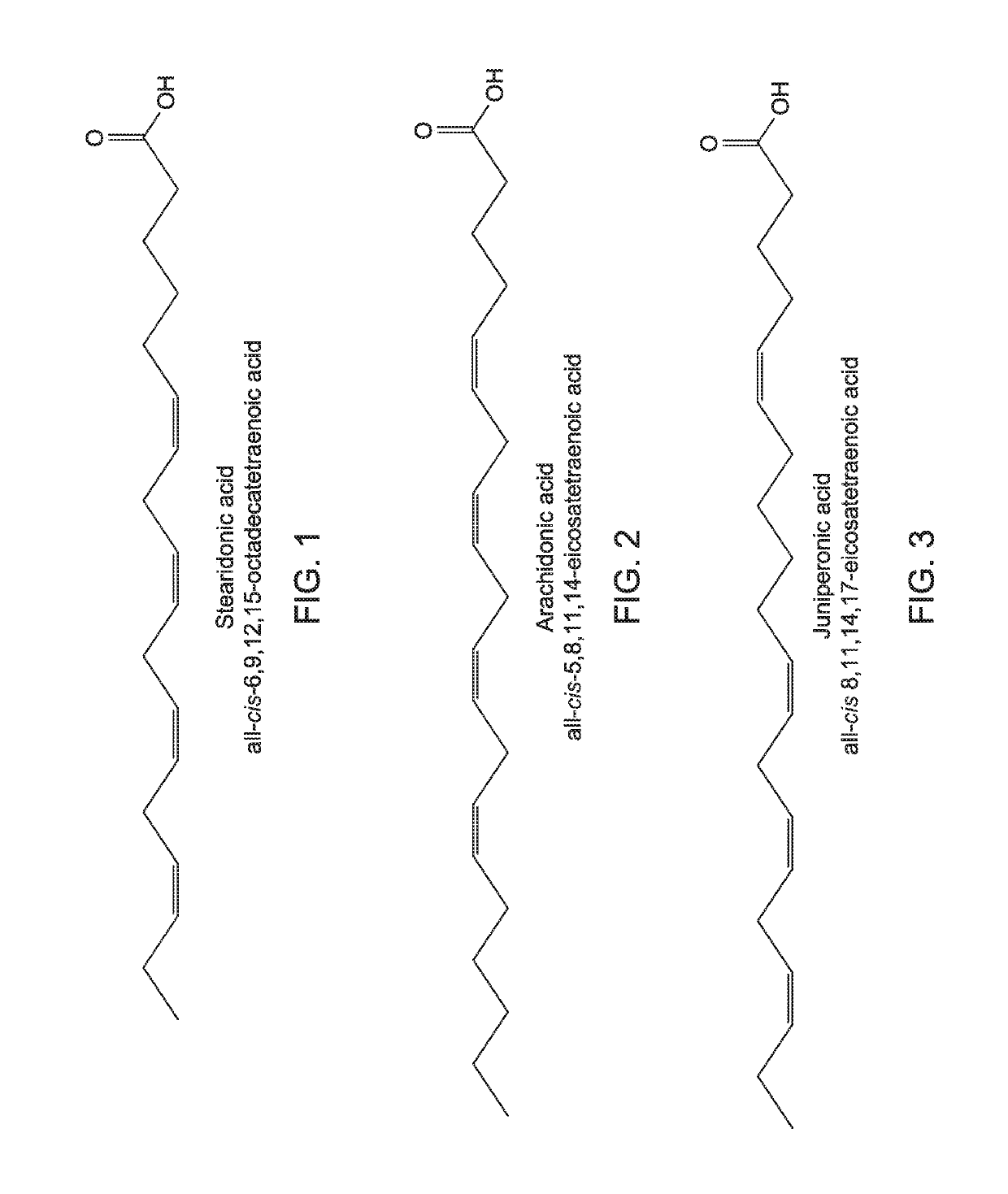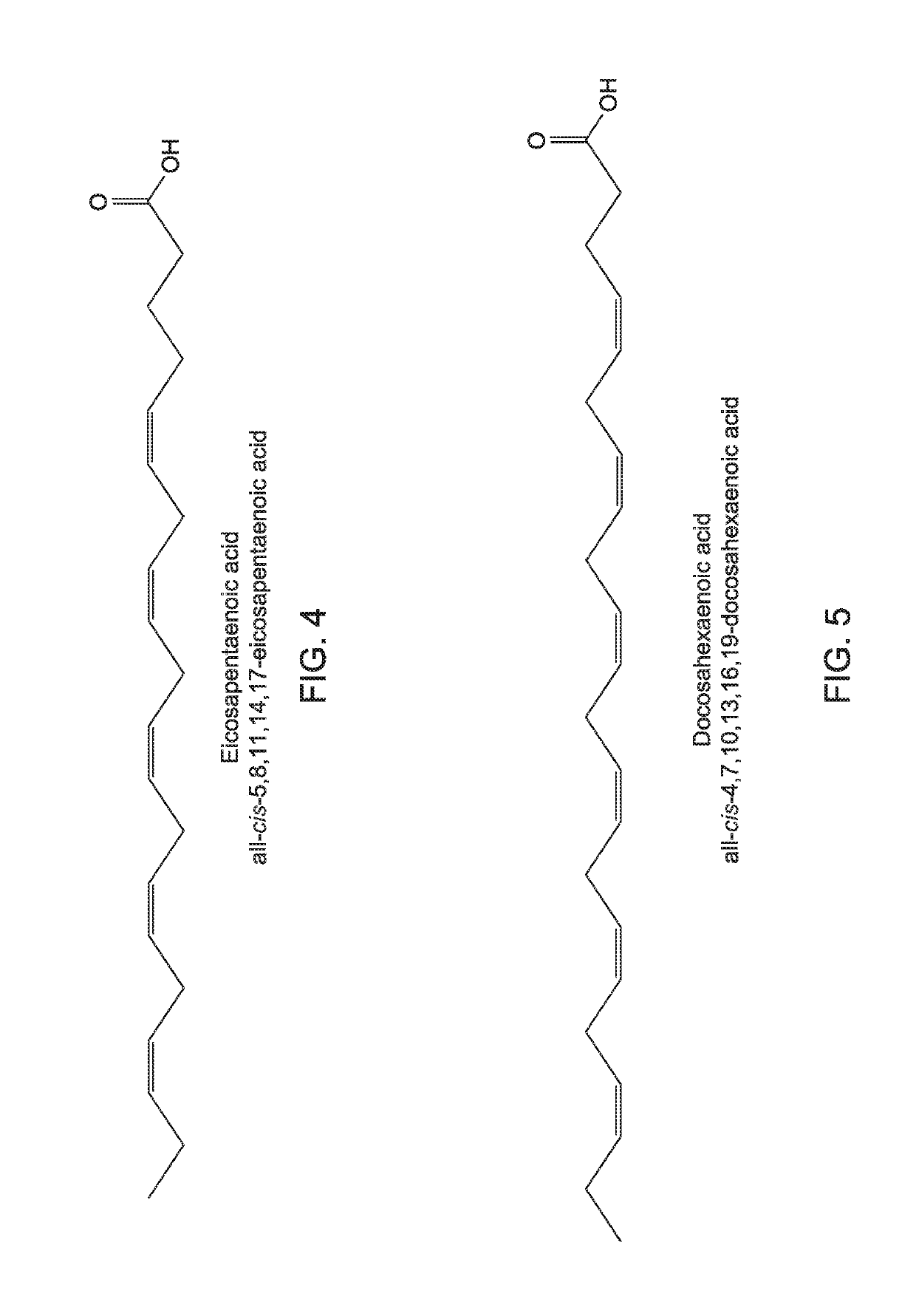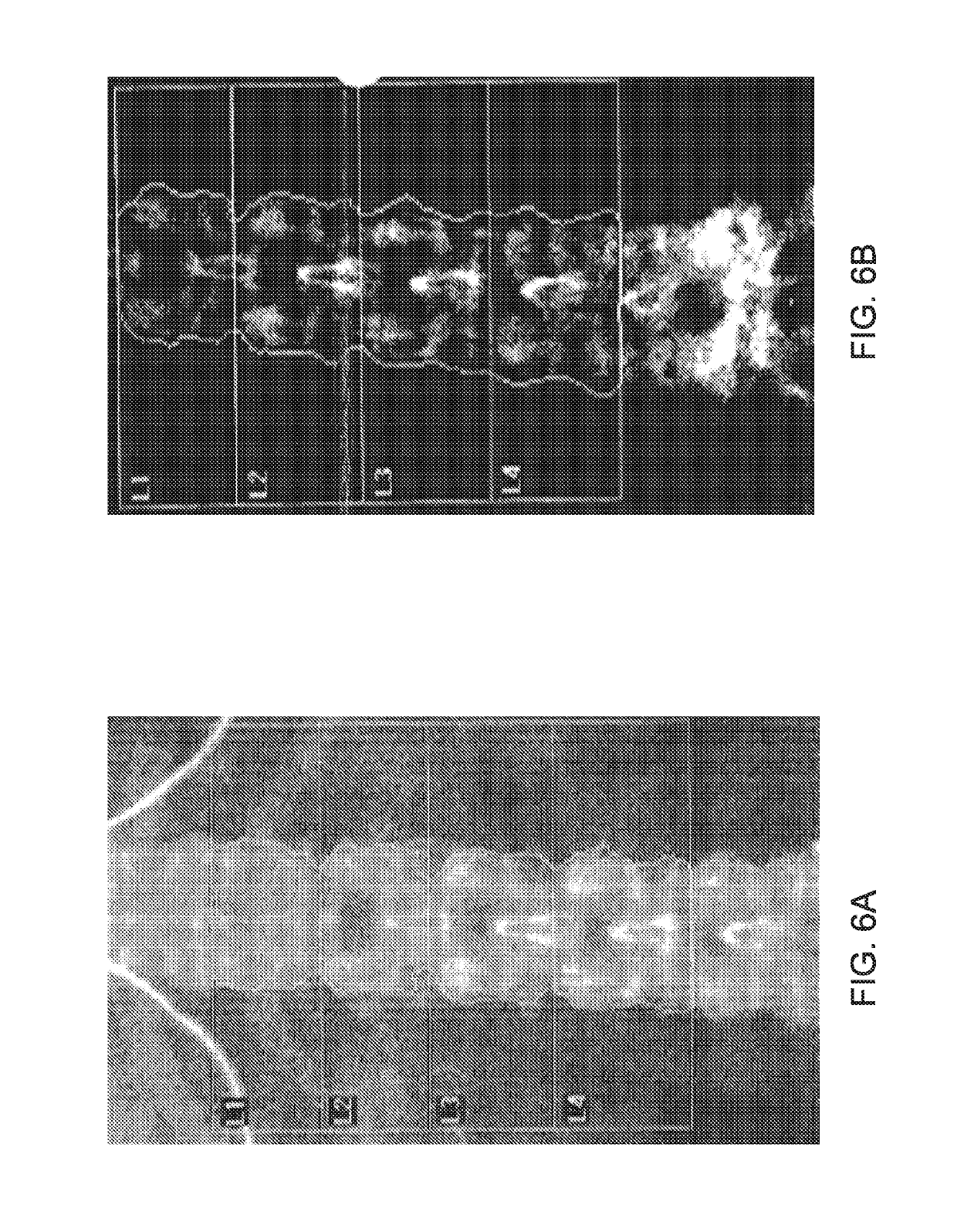Methods and compositions for preventing and treating osteoporosis
a technology of osteoporosis and composition, applied in the direction of macromolecular non-active ingredients, algae medical ingredients, powder delivery, etc., can solve the problems of increasing the risk of bone fracture, deterioration of bone tissue, bone fragility, etc., to reduce the risk of osteoporosis, prevent and/or treat osteoporosis, and increase bone mineral density
- Summary
- Abstract
- Description
- Claims
- Application Information
AI Technical Summary
Benefits of technology
Problems solved by technology
Method used
Image
Examples
example 1
[0074]A composition comprising GLM was used to treat a patient diagnosed with osteoporosis. The GLM composition comprised a GLM lipid extract prepared from rapid cold-dried GLM powder. The GLM lipid extract comprised at least about 2.5% by weight of SDA, at least about 0.25% ETA, at least about 12% by weight of EPA, and at least about 8% by weight of DHA. Prior to treatment with the dietary supplement composition comprising GLM, a white female 70 year old patient was diagnosed with osteoporosis. The patient was diagnosed by a combination of physical examination and measurement of BMD. Bone mineral density was determined by a lumbar spine scan using dual-energy X-ray absorptiometry (Delphi Model C). FIG. 6A shows the DXA lumbar spine scan. Table 1 shows the DXA scan results summary:
[0075]
TABLE 1RegionArea (cm2)BMC (g)BMD (g / cm2)T-scoreL111.488.630.751−1.6L211.417.940.696−3.0L313.6913.630.996−0.8L416.2018.521.1430.2Total52.7848.710.923−1.1
[0076]The DXA scan indicated that the patient ...
example 2
[0079]A composition comprising GLM was used to treat a patient diagnosed with osteoporosis. The GLM composition comprised a GLM lipid extract prepared from rapid cold-dried GLM powder. The GLM lipid extract comprised at least about 2.5% by weight of SDA, at least about 0.25% ETA, at least about 12% by weight of EPA, and at least about 8% by weight of DHA. Prior to treatment with the dietary supplement composition comprising GLM, an elderly female patient was diagnosed with osteoporosis. The patient was diagnosed by a combination of physical examination and measurement of BMD. Bone mineral density was determined by lumbar spine scan and neck scan using dual-energy X-ray absorptiometry. The DXA scan indicated that the patient had a T-score of −0.7 for the spine and a T-score of −1.4 for the neck. After diagnosis, the patient was treated with an orally administered daily dose of 50 mg of the GLM lipid extract in the form of a soft gel capsule. Treatment was continued for a period of 1 ...
PUM
| Property | Measurement | Unit |
|---|---|---|
| weight | aaaaa | aaaaa |
| weight | aaaaa | aaaaa |
| bone mineral density | aaaaa | aaaaa |
Abstract
Description
Claims
Application Information
 Login to View More
Login to View More - R&D
- Intellectual Property
- Life Sciences
- Materials
- Tech Scout
- Unparalleled Data Quality
- Higher Quality Content
- 60% Fewer Hallucinations
Browse by: Latest US Patents, China's latest patents, Technical Efficacy Thesaurus, Application Domain, Technology Topic, Popular Technical Reports.
© 2025 PatSnap. All rights reserved.Legal|Privacy policy|Modern Slavery Act Transparency Statement|Sitemap|About US| Contact US: help@patsnap.com



